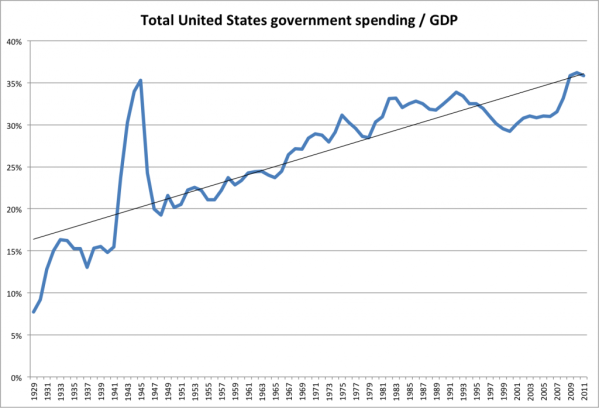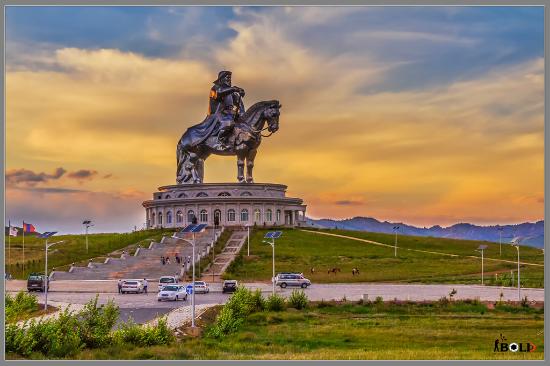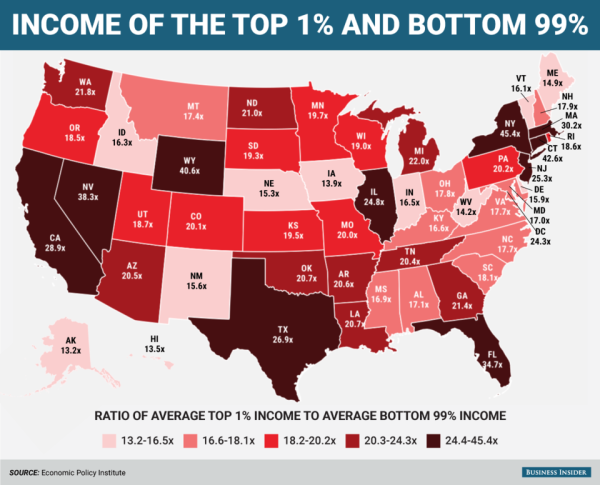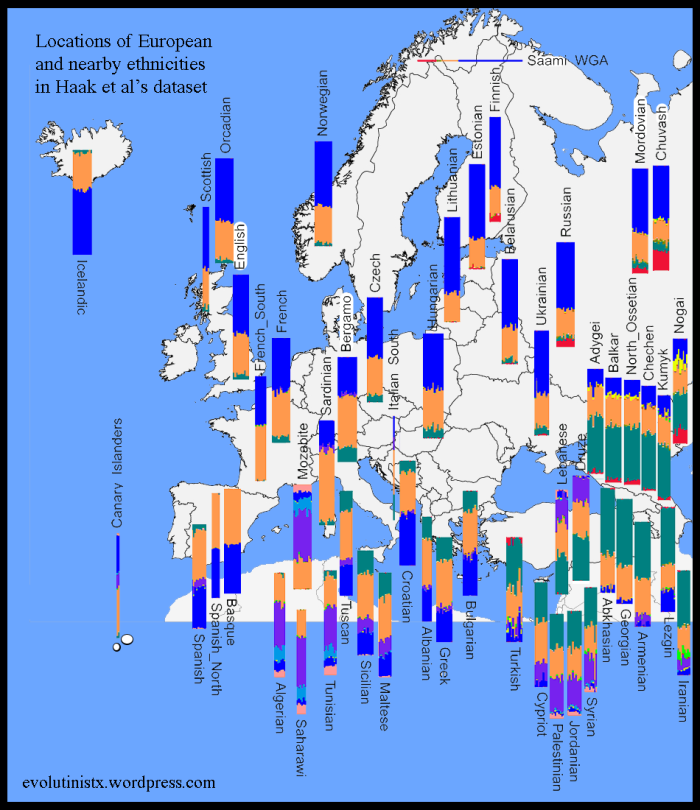Today I’m using a speech-to-text app for this post because I want to see if my conversation style is different from my normal writing style. I normally have many interesting conversations here at home which I then try to write down as the posts you read, so let’s see if I get nice flow going here or if the text to speech program is good enough to actually capture what I’m saying.
Today’s topic is religion and politics. I’ve been thinking about this over the weekend–just read last Friday post about religion and politics if you need to catch up–and I think this is an important, overlooked aspect of our electoral system.
Now, EvolutionistX is officially apolitical: we try not to do it much on the day-to-day workings of politics or politicians unless those workings happened to illuminate some broader idea or concept like fear or anger, energy use or demographic change, etc.
Politics are a good way of looking at human structures, but it’s very easy to get bogged down in the details of “this program has a 2% interest rate of 1% interest rate with a delayed API” and similar such things, so you have to be careful not to let yourself get sucked in.
One of the founding concepts of this blog is that there are some very basic, foundational patterns to life that show up over and over again. They show up in nature, they show up in society, they show up in the cosmos. They are part of the basic structure of the universe because they have to do with the way energy works the way atoms and electrons work and ultimately how math works. Like they say, math is the language God used to write the universe. So, take something like the Fibonacci numbers. The Fibonacci numbers show up over and over in nature. They show up in sunflower seeds, they show up in pine cones, in the reproductive patterns of rabbits and bees, in the spirals of galaxies and in our DNA. Why?
Basically, the Fibonacci sequence (and spiral) show up so often because it’s a very easy way to build numbers, and the ratios between them are very efficient:
Some of the pictures you see claiming to be Fibonacci spirals or Golden Ratios really aren’t, because people like to claim they’re everywhere, but they’re still very common, because they’re a very simple mathematical process that can be used to build complex objects.
When we’re looking at larger scale things, like organisms or societies, the same basic rules apply. Energy is energy, no matter how big you are. Space is space. So when I look at things like politics, I’m looking more for the universal, I’m looking for the mathematical, not the day-to-day. I want see the underlying structure of the thing and what motivates that structure: Is it energy? Is it math? Is it is a geography?
(I didn’t mention geography before, but sometimes there is a river and you’re not going to cross it and that just becomes your border, and sometimes the river is easy to cross so your people live in that River Valley and the whole valley becomes the cradle of your culture.)
When I look at the electoral politics, I don’t care as much about the day-to-day workings this policy or that person. I regard that as kind of gossipy. It has its good parts and is sometimes important, but long term, most of the day-to-day political news turns out to be totally irrelevant.
I think if you really want to understand American politics you need to step back, stop thinking about the policies, and realize that what we’re looking at here in America are two or three main ethno-religious groups.
What do I mean by ethno-religious groups? The ethno-religious group is a group of people that sees itself as a coherent ethnic group that all believes the same religion. Really, religions are ethnic groups because people tend to marry people who have the same belief structures as they do.
Let’s discuss ethno-religions a bit, because some people get really tripped up by the concept (and some people already understand it because they belong to an explicitly structured one. The rest of us, like fish, are often unaware of the water we swim in.) The American perspective traditionally has been freedom of religion: that religion is a matter of conscience. Free people are allowed to freely chose what they believe in, and people use their mental faculties–intelligence, logic, reason, etc–to pick the beliefs they think are most correct. Taken philosophically, this gets into the Free Will versus Determinism debate. People like claim that they use their free will to pick their religion, but do we really believe the entire population of Pakistan chooses every single generation to be 99% Muslim? Certainly Islam is the law of the land, yet if you asked them, I doubt the majority would say that they feel compelled to be Muslim. They would say that they actually believe their religion and that they believe any rational, thoughtful person who considered all of the alternatives would simply come to the conclusion that Islam is correct. And if you asked a Christian in Inquisition-era Spain the same question, they would also tell you that any rational person, using their faculties, would come to the obvious conclusion that Christianity is the correct religion.
And yet, of course, all of these people are really just following the religion they were taught by their parents when they were children. (This was the realization that turned me into an atheist.)
Religion is a funny thing like that, but once you believe a religion, you tend to marry other people from your own religion and you tend not to marry people who have radically different beliefs. Now, you might say “oh I like the Episcopalian Church but I’d be okay with Methodist or Lutheran,” but effectively there’s no difference between a Episcopalians, Methodists, and Lutherans in modern America they. They are the same religion with very minor aesthetic differences. By contrast, if you believe God is a very harsh fellow–he doesn’t like gay people, smites people who disobey him with plagues, and wants women to wear burkas–and I believe God is a hippie guy who loves everyone and wants to hug all of the trees, our relationship might not work out so well.
People tend to marry into their own religion because they marry people with the same belief systems as themselves and because religions functionally define the boundaries of our communities and proper behavior.
If anything, the American experiment in which you can pick any religion you want and it’s assumed that people pick religions rationally is very unusual, historically speaking. Going back, every community used to have their own, tutelary deity. Athens was guarded by Athena. Poseidon, Apollo, and Aphrodite guarded Troy. And of course there are many ancient stories of people trying to score a military victory over their opponents by first stealing the statue of their tutelary deity.
This is why not making sacrifices to the local deity was considered a capital offense in the ancient world. If people turned against the deity would turn against them. Without the deity’s protection, the city (or country) would fall in battle and be destroyed. This is why Socrates was executed by Athens: they thought that Socrates was leading the citizens, the young people, into atheism, and if they became atheists then they wouldn’t make sacrifices to the city’s deities, and then the deities would abandon them and they would get conquered.
We see this sort of idea over and over:
Now the Israelites went out to fight against the Philistines. The Israelites camped at Ebenezer, and the Philistines at Aphek. 2 The Philistines deployed their forces to meet Israel, and as the battle spread, Israel was defeated by the Philistines, who killed about four thousand of them on the battlefield. 3 When the soldiers returned to camp, the elders of Israel asked, “Why did the Lord bring defeat on us today before the Philistines? Let us bring the ark of the Lord’s covenant from Shiloh, so that he may go with us and save us from the hand of our enemies.”
4 So the people sent men to Shiloh, and they brought back the ark of the covenant of the Lord Almighty, who is enthroned between the cherubim. And Eli’s two sons, Hophni and Phinehas, were there with the ark of the covenant of God.
5 When the ark of the Lord’s covenant came into the camp, all Israel raised such a great shout that the ground shook. 6 Hearing the uproar, the Philistines asked, “What’s all this shouting in the Hebrew camp?”
When they learned that the ark of the Lord had come into the camp, 7 the Philistines were afraid. “A god hasa]”>[a] come into the camp,” they said. “Oh no! Nothing like this has happened before. 8 We’re doomed! Who will deliver us from the hand of these mighty gods? They are the gods who struck the Egyptians with all kinds of plagues in the wilderness. 9 Be strong, Philistines! Be men, or you will be subject to the Hebrews, as they have been to you. Be men, and fight!”
10 So the Philistines fought, and the Israelites were defeated and every man fled to his tent. The slaughter was very great; Israel lost thirty thousand foot soldiers. 11 The ark of God was captured, and Eli’s two sons, Hophni and Phinehas, died.
And in the Greek/Roman tale:
In Greek and Roman mythology,[1] the palladium or palladion was a cult image of great antiquity on which the safety of Troy and later Rome was said to depend, the wooden statue (xoanon) of Pallas Athena that Odysseus and Diomedes stole from the citadel of Troy and which was later taken to the future site of Rome by Aeneas. The Roman story is related in Virgil‘s Aeneid and other works. Rome possessed an object regarded as the actual Palladium for several centuries; it was in the care of the Vestal Virgins for nearly all this time. …
The arrival at Troy of the Palladium, fashioned by Athena[5] in remorse for the death of Pallas,[6] as part of the city’s founding myth, was variously referred to by Greeks, from the seventh century BC onwards. The Palladium was linked to the Samothrace mysteries through the pre-Olympian figure of Elektra, mother of Dardanus, progenitor of the Trojan royal line, and of Iasion, founder of the Samothrace mysteries.[7] Whether Elektra had come to Athena’s shrine of the Palladium as a pregnant suppliant and a god cast it into the territory of Ilium, because it had been profaned by the hands of a woman who was not a virgin,[8] or whether Elektra carried it herself[9] or whether it was given directly to Dardanus[10] vary in sources and scholia. In Ilion, King Ilus was blinded for touching the image to preserve it from a burning temple.[11]
During the Trojan War, the importance of the Palladium to Troy was said to have been revealed to the Greeks by Helenus, the prophetic son of Priam. … The Greeks learned from Helenus, that Troy would not fall while the Palladium, image or statue of Athena, remained within Troy’s walls. The difficult task of stealing this sacred statue again fell upon the shoulders of Odysseus and Diomedes. Since Troy could not be captured while it safeguarded this image, the Greeks Diomedes and Odysseus made their way to the citadel in Troy by a secret passage and carried it off. In this way the Greeks were then able to enter Troy and lay it waste using the deceit of the Trojan Horse. …
According to the Narratives of the Augustan period mythographer Conon as summarised by Photius[12], while the two heroes were on their way to the ships, Odysseus plotted to kill Diomedes and claim the Palladium (or perhaps the credit for gaining it) for himself. He raised his sword to stab Diomedes in the back. Diomedes was alerted to the danger by glimpsing the gleam of the sword in the moonlight. He disarmed Odysseus, tied his hands, and drove him along in front, beating his back with the flat of his sword… Because Odysseus was essential for the destruction of Troy, Diomedes refrained from punishing him. …
According to various versions of this legend the Trojan Palladium found its way to Athens, or Argos, or Sparta (all in Greece), or Rome in Italy. To this last city it was either brought by Aeneas the exiled Trojan (Diomedes, in this version, having only succeeded in stealing an imitation of the statue) or surrendered by Diomedes himself.
An actual object regarded as the Palladium was undoubtedly kept in the Temple of Vesta in the Roman Forum for several centuries. It was regarded as one of the pignora imperii, sacred tokens or pledges of Roman rule (imperium).
And in the tragedy Iphigenia in Tauris, Orestes arrives at the island of Tauris with the intention of stealing the local deity in order to make the gods like him again:
O Phoebus, by thy oracles again
Why hast thou led me to these toils? E’er since,
In vengeance for my father’s blood, I slew
My mother, ceaseless by the Furies driven,
Vagrant, an outcast, many a bending course
My feet have trod: to thee I came, of the
Inquired this whirling frenzy by what means,
And by what means my labours I might end.
Thy voice commanded me to speed my course
To this wild coast of Tauris, where a shrine
Thy sister hath, Diana; thence to take
The statue of the goddess, which from heaven
(So say the natives) to this temple fell:
This image, or by fraud or fortune won,
The dangerous toil achieved, to place the prize
In the Athenian land: no more was said;
But that, performing this, I should obtain
Rest from my toils.
The tradition continues, though in the more moderate form of college students stealing each other’s mascots before major football games.
Of course, being an ethno-religious group doesn’t mean a group doesn’t have policies. The ancient Athenians had plenty of policies and political debates, many of which have been preserved and can still be read. Ancient Israel had judges and laws and political disputes. So does modern Israel; so do modern Palestinians, but the conflicts between them aren’t over “policies”, they’re over each group’s right to keep living in the area, drinking the water and tilling the land. After all, these are the things people need to survive.
Anyway, Old Stock Americans who believe in the Old Stock American religion are generally whites who arrived before the 1965 Immigration Act and live outside the Northeast/major cities. They are your original colonists, settlers, pioneers, prairie migrants–the Oregon Trail type people. They all started out from different European countries: England and France, Norway and Sweden, but over here they mixed together and quickly lost those original identities they just began calling themselves “whites” in contrast with the other major groups in the US.
American Christianity is not just Christianity that happened to be practiced by Americans. The founding belief of the Puritans and Pilgrims is manifest destiny: that America, the land itself, is a gift from God to the pioneers because they were righteous people.
And the early pioneers had good reason for this belief. When they arrived, yes, there were already people here, but those people seemed to just be fading away before them. People understood that diseases like Smallpox were killing the Indians, but they didn’t understand why Smallpox was so much more deadly for the Indians. All they knew was that it was.
The Pilgrims were essentially religious refugees who crossed the ocean to escape persecution, and when they got here, they found fertile, empty land. They saw in this the hand of Providence. So American Christianity in its basic form is a lot like early Judaism, which was founded on the story of Moses leading the people out of slavery in Egypt, across the Red Sea and into the promised land. And American Christians knew that. For example, the town of Salem, Massachusetts (of witch trial fame) was named after Jerusalem.
“Salem” itself means peace, but it’s also the name of the tutelary deity of Jerusalem, Salim, which you might notice is not YHWH. “Jeru” means foundation or founding stone, so the city’s name translates to “foundation of Salim” or “city of Salim” but over the years, people have opted to interpret salim as “peace,” so that it is the “City of Peace.”
But anyway, these American pioneers saw themselves as founding the new Jerusalem, the new Zion, the new Shining City on the Hill that would be a light and a beacon to all nations. And I think the ultimate expression of this American religion is Mormonism, which replays the whole narrative again, with people escaping persecution, trekking across the wilderness all the way to Utah and then building Salt Lake City. And unlike the rest of us, the Mormons have their own prophets, their own book (a new new testament) and came up with theological explanations for the existence of Native Americans. It’s really interesting how they managed to do that, just as we came to the era of mass literacy.
 Now for the rest of us, as we were discussing last week in response to World’s Greatest Dad’s interview in Parallax Optics, the era of mass literacy makes iconogenesis–the creation of new deities or cult figures–difficult. If you go back to the 1800 and look at the pictures people used to paint of George Washington, he is near deified: there are beautiful paintings of Washington ascending into heaven surrounded by angels. If you read a modern biography of George Washington, certainly he was an impressive man who lead an impressive life, but you probably wouldn’t conclude that he was on the level of Elijah the prophet. But in the popular imagination–or at least when people needed to paint him for national buildings–he approached the level being taken into heaven in burning chariots.
Now for the rest of us, as we were discussing last week in response to World’s Greatest Dad’s interview in Parallax Optics, the era of mass literacy makes iconogenesis–the creation of new deities or cult figures–difficult. If you go back to the 1800 and look at the pictures people used to paint of George Washington, he is near deified: there are beautiful paintings of Washington ascending into heaven surrounded by angels. If you read a modern biography of George Washington, certainly he was an impressive man who lead an impressive life, but you probably wouldn’t conclude that he was on the level of Elijah the prophet. But in the popular imagination–or at least when people needed to paint him for national buildings–he approached the level being taken into heaven in burning chariots.
People had this attitude back in the 1800s that the Founding Father’s were something like the Patriarchs of Israel, that the pilgrims and later Brigham Young and his followers were something like the Israelites crossing the Red Sea and wandering in the wilderness.
By the way, we’ve all heard the story of Squanto and the first Thanksgiving, but I think people leave out a little bit that makes him such a miracle from the Pilgrims’ perspective: he spoke English.
Why on Earth would any Native Americans in the area speak English? Sure, Squanto helped the settlers plant corn, but the really important thing he was able to show them how to plant corn because he was able to communicate with them. Squanto knew English because he had been picked up by a previous group of colonists (probably some folks in Virginia,) learned English from them, and then dropped off around Massachusetts. From the Pilgrims’ perspective, this was an absolute miracle that there happened to be a guy who spoke English right where they needed him, who saved their lives after that horrible first winter killed so many of them.
American Christianity started with the Pilgrims, but oddly, their modern descendants don’t follow this religion anymore. Their religious descendants, as I’ve said, are mostly the Mormons, Southern Baptists, and similar groups. It’s very curious how that happened. (And of course I don’t mean that Mormons and Southern Baptists are exactly the same, just that they share this Old Stock American belief in manifest destiny, of going out into the wilderness and conquering the place.)
Any time people move into a place, they need some belief structure to organize their claim to the place. So Judaism makes a good model religion for a belief system based on invading the wilderness, conquering it, and saying “yes, this is the place that I own because God said so.” This is an expansion of your people rather than an expansion of ideas, so all you have to do for the religion to flourish is for your people to flourish.
On the other hand, what happens to a religion that is already established, so that after years of living in an area 400 years and the area is basically filled up? You no longer have a wilderness to expand into, and sometimes you even start talking to the people your ancestors used to fight and discover that they’re pretty decent.
As a model religion, early Christianity took Judaism, and added the concept of original sin to convince an existing population of people to convert to it. Judaism has the story of the serpent and the fruit in the Garden of Eden, but this sin was not hereditary. Christianity introduced the idea that you needed forgiveness for this sin, so its spread at least partly by convincing you that you had this sin and they could cure you of it.
We see this same pattern in modern Progressives, who have introduced the idea of an incurable original sin into the American founding mythos. If American Christianity is manifest destiny, persecuted religious group crossing the Wilderness, crossing the ocean led to their New Zion, the founding myth of Progressivism is slavery and racism. We see this in things like the 1619 Project, and if we had functional iconogenesis, the founding fathers of Progressivism, their new deities would be Saints MLK and Abraham Lincoln.

And we are very close to that, in fact. Why else would the President place a wreath at the feet of MLK’s statue? Statues don’t care about wreaths, but deities–and the people who believe in them–do.
(I hope this speech to text experiment is working. It is definitely very different from my perspective. When I write with my fingers, I can pause, sometimes I have to think hard about what I want to say and how to organize it. Right now I’m trying to figure out what I want to say on the fly, and I admit I feel untethered, unmoored. I’m not used to working like this and I hope it works.)
Anyway, when you get a new religion sweeping through the populace, it’s pretty normal for the new religion to go on a crusade of smashing up the idols of the old religion, a la Abraham and the Taliban smashing up the Bahmian Buddhas. These old deities are often deemed “devils” and “demons” in the new religion. In the US, this process involves tearing down monuments to Confederate Heroes and generally insulting the memory of the old religion’s heroes, like Thomas Jefferson and Christopher Columbus. It’s a typical process of smashing the old religion’s symbols.
But I want to get back to you the election, because people won’t shut up about it. It was more fun back when we had a dozen or so people on the primary stage. Then everyone could find at least some perspectives they liked. But now we’re just down to the last few candidates: Warren, Biden, and Sanders. People have been trying to analyze why Biden is the front runner from a policy perspective, and I think this is basically the wrong approach. Of course you have policy differences between them, and they have to be personable enough that people want to vote for them–a truly boring candidate would have trouble motivating voters to head to the polls on election day.
But I think Biden’s popularity comes not from his support for particular policies, but because he represents the Democratic establishment. He was VP under Obama, so people who liked Obama and want more of the same aren’t really rejecting Warren or Warren’s policies so much as embracing their party’s core leader. If Warren had been Obama’s VP, then I think she’d be the front runner right now.
Sanders does have different ideas from the others, and as such he is the party’s “outsider” candidate. Even if people like his ideas, he is still, from a tribal perspective, slightly outside. If we look at the most tribal voters in the US–that is, the voters who vote along the strongest ethnic lines, it’s black voters. Blacks vote overwhelmingly Democratic–something like 90, 95% of them voted for Obama. In elections where there weren’t any black guys running, blacks still vote around 85-90% in favor of the Democratic candidate. Whites are more split, voting about 55/45 or 60/40; Hispanics are in between, at around 60-75% voting for the same party. I’m pulling these numbers from memory, so don’t drag me if they’re slightly off.
Point is, the more tribal your voting pattern is, the less you are voting for “policies” and the more you are just voting for the guy who represents your side, not some outsider trying to swoop in and change things. And that’s how politics works in a multi-ethnic systems. Ethnic groups vote pretty much on party lines and just hope that their guy will enact policies that benefit them.
Just like the substantive claims of our religions, (eg, “Jesus rose from the dead,) we like to think that we actually believe the policies we claim to believe, but people can be convinced to change their opinions if someone they respect tells them otherwise. For example, the year before Trump came onto the electoral scene, my mother was in favor of helping “unaccompanied minors” coming over the border from Mexico. After hearing a few of Trump’s speeches, she decided we should build a wall. People who were telling me that Coronavirus wasn’t a big deal a couple of weeks ago have been changing their minds after seeing some of the information coming out of Italy, and people who thought it was a big deal decided it probably wasn’t after hearing Rush Limbaugh say it’s no more than the common cold.
Much of what people believe comes from the other people around them, so political beliefs get bound together in these weird packages. Like, someone starts out uncomfortable with homosexuality, and from there they go on to decide that the second amendment is really important and yay bump stocks, even though these two issues really have nothing in common except that they are both thought to be important by the same tribe of people. Likewise, someone who is gay will likely come out against racism and Islamophobia, even though there’s not only no connection between the two, but Muslims are actually not terribly friendly to gay people. That’s tribalism for you.
And that’s the end of my text. I hope this experiment worked; I’m feeling a bit feverish, so let’s hope it’s not coronavirus and take a break. You all stay safe, stay indoors, don’t hoard the toilet paper, and don’t cough on each other.
Take care.

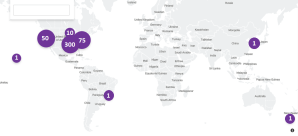
 Welcome. Come in, take a seat. Would you like some tea?
Welcome. Come in, take a seat. Would you like some tea?


 According to the census bureau, in 2012, American infants were 50% white and 50% non-white–about 25% of American children are now Hispanic.
According to the census bureau, in 2012, American infants were 50% white and 50% non-white–about 25% of American children are now Hispanic.



